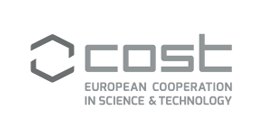Name of the applicant: Bianca Martinengo. Affiliation: Department of Pharmacy and Biotechnology, Alma Mater Studiorum - University of Bologna
Name of the tutor (Hosting lab): Daniele Castagnolo. Affiliation: University College London, Department of Chemistry, University College London
Background. Exploring the use of biowaste in medicinal chemistry to develop bioactive compounds is a topic of great interest with extraordinary opportunities for antiparasitic drugs. In this context, cashew nut-shell liquid (CNSL) from Anacardium occidentale, is an inedible oil obtained as by-product during cashew nut processing. Around 30–35% of the shell weight is CNSL, and about ∼1 M tonnes of CNSL is produced annually worldwide. Chemically, CNSL mainly consists of bioactive phenolic lipids, namely cardanols, cardols, 2-methylcardols and anacardic acids, which share a pentadecyl alkyl side chain with a variable degree of unsaturation. From a medicinal chemistry point of view, CNSL is a largely available and inexpensive biowaste with great potential as a source of drug precursors.1 In addition, CNSL and its derivatives have been showed to have many biological properties, such as anti-inflammatory, antioxidant, antitumoral and antimicrobial activity. Remarkably, CNSL derivatives have shown potential for the treatment of vector borne parasitic diseases.2 Among these pathologies, leishmaniasis is of great public health concern because of its incidence and lethality. It is a complex vector-borne disease infecting the world’s poorest populations in over 90 countries throughout Asia, Africa, the Middle East, and Central and South America. Current pharmacological treatments are outdated and inadequate, and thus the development of novel, effective and less toxic drug regimens is urgently required.
Background. Based on these premises, our group has explored the possibility of exploiting CNSL as suitable starting material to develop anti-leishmania CNSL derivatives. Specifically, my PhD project’s goal was the design and synthesis of bio-based CNSL phosphonium and ammonium salts starting from the shorter-chain (C8) CNSL derivative LDT72, LDT74 and LDT490Ms combined to lipophilic cations as mitochondrion-targeting motifs3 (e.g., triphenylphosphonium or pyridinium moiety) [Figure 1]. Following green approaches, a small library of bio-based CNSL phosphonium and ammonium salts is being synthesized and the resulting derivatives will be tested for their anti-leishmanial potential.
Within OneHealthdrugs, the aim of this STSM is the biocatalytic derivatization of natural lipids and CNSL derivatives using unspecific peroxygenases (UPOs) enzymes in order to synthesize a small library of compounds, which will be tested for their antiparasitic potential (e.g., Trypanosoma and Leshmania spp.). This STSM should then contribute to deliverable D2.1 “report on compounds synthesized” and D2.2 “report on compounds identified from natural sources and organic waste”.
Goals.
One Health is an integrated unifying approach whose final goal is to sustainably balance and optimize the health of people, animals, and ecosystems. To pursue a One Health approach, new drugs should be developed taking into consideration main facets of sustainability. In particular, the use of biowaste as starting material is a topic of great interest in the discovery of new bioactive compounds.4 Dr. Castagnolo is a renowned expert in the development of green methodologies for the synthesis of drugs exploiting enzymes and, in parallel, in sustainable antimicrobial drug discovery to combat drug resistance, one of the major limitations of currently available drugs for the treatment of vector-borne diseases. The main objective of this STSM will be the development of biocatalytic reactions for the derivatization of natural lipids and CNSL derivatives to synthesize a small library of compounds, that will be tested for their antiparasitic potential (Trypanosoma spp. and Leishmania spp.). We have reasoned that the development of an alternative procedure to functionalise the pentadecyl alkyl side chain of CNSL derivatives using UPOs, might be particularly promising in terms of sustainability and to avoiding the use of hazardous reagents and solvents 5.
References
[1] Yiping Shi, Paul C. J. Kamer and David J. Cole-Hamilton. Synthesis of pharmaceutical drugs from cardanol derived from cashew nut shell liquid. Green Chem., 2019, 21, 1043–1053.
[2] Cerone M., Uliassi E., Ebiloma G.U., Lemgruber L., Bergamini C., et al. Discovery of Sustainable Drugs for Neglected Tropical Diseases: Cashew Nut Shell Liquid (CNSL)-Based Hybrids Target Mitochondrial Function and ATP Production in Trypanosoma brucei. ChemMedChem, 2019, 14, 621 – 635.
[3] Zielonka J., et al., Mitochondria-Targeted Triphenylphosphonium-Based Compounds: Syntheses, Mechanisms of Action, and Therapeutic and Diagnostic Applications, Chem. Rev., 2017, 117, 10043−10120
[4] Fox K.; Luque R.; Soares Romeiro L.A.; Bolognesi M.L. New Biomass Reagents for the Synthesis of Bioactive Compounds. Topics in Medicinal Chemistry, 2021, 38, 373 – 389.
[5] Hobisch, M., et al. Recent developments in the use of peroxygenases - Exploring their high potential in selective oxyfunctionalisations. Biotechnol Adv. 2021, 51, 107615
COST (European Cooperation in Science and Technology) is a funding agency for research and innovation networks. The COST ACTIONS help connect research initiatives across Europe and enable scientists to grow their ideas by sharing them with their peers. This boosts their research, career and innovation.
One Health drugs against parasitic vector borne diseases in Europe and beyond
OneHealthdrugs
24/10/2022
23/10/2026
27/05/2022
Download file
Maria Paola Costi
Anabela Cordeiro da Silva
Maria Cristina Notarsanto
Maria Esposito and Laura Leonardi


